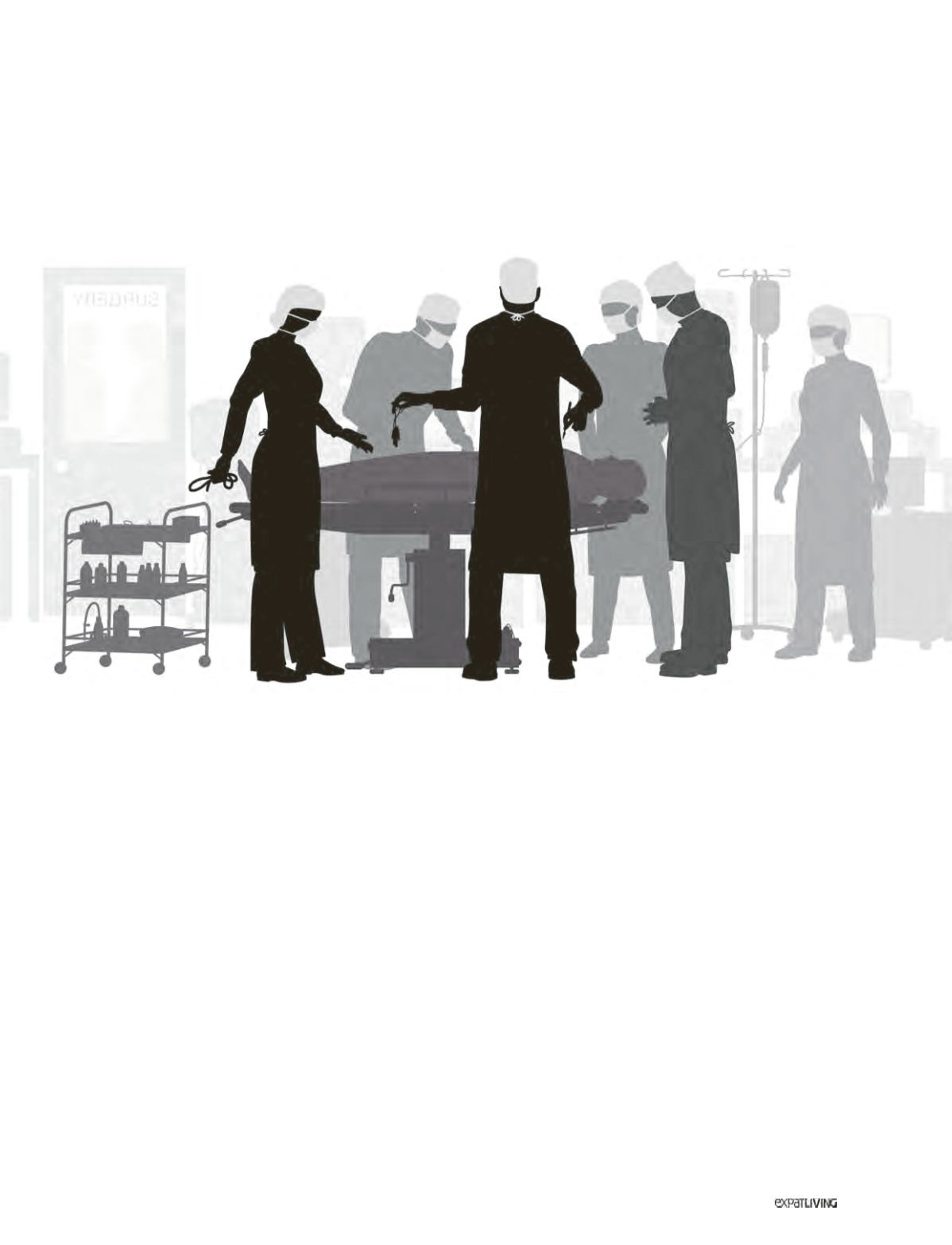

MEDICAL ADVANCES
309
June14
On one hand, we’re warned
that diabetes, cardiovascular
and other metabolic diseases
are spiralling alarmingly, mainly
due to poor eating habits. On
the other hand, we’re told that
more people than ever can
expect to live until the age of
100 or more. How can
both
of these scenarios be true?
VERNE MAREE looks at some
remarkable new developments
in medicine and chats to four
Singapore surgeons.
R
ecent news reports reveal that heart repair breakthroughs have in some
cases replaced the surgeon’s knife: some patients can now have faulty
valves, irregular heartbeats, holes in the heart and other defects repaired
without having to undergo major surgery.
Balloon angioplasty is used to widen a narrow or obstructed blood vessel. A
leaky aortic valve can now be replaced by an artificial one that’s flexible enough
to be fitted into a catheter and wedged inside the faulty one. Catheters can also
be used to introduce tools to remove heart tissue that’s causing atrial fibrillation,
the most common heart rhythm problem.
Instead of opening the chest, they’re able to put catheters in through the leg, or
sometimes through the arm. Often, this means being able to go home in a day or two.
But catheter treatment is not possible for everyone or every condition, as a good
South African friend of mine can attest: just threemonths ago, he was “spatchcocked”
– his own expression, not mine! – in a double heart-bypass operation.
High blood pressure? They’re talking about devices that employ a catheter and
radio waves to neutralise certain nerves, near the kidneys, which promote high blood
pressure. Need a fresh pair of knees? New digital mapping technology is allowing
doctors to dramatically improve the outcome of knee surgeries by improving the
fit of new knees on patients’ bodies. But that’s not all…
On the
Cutting Edge



















